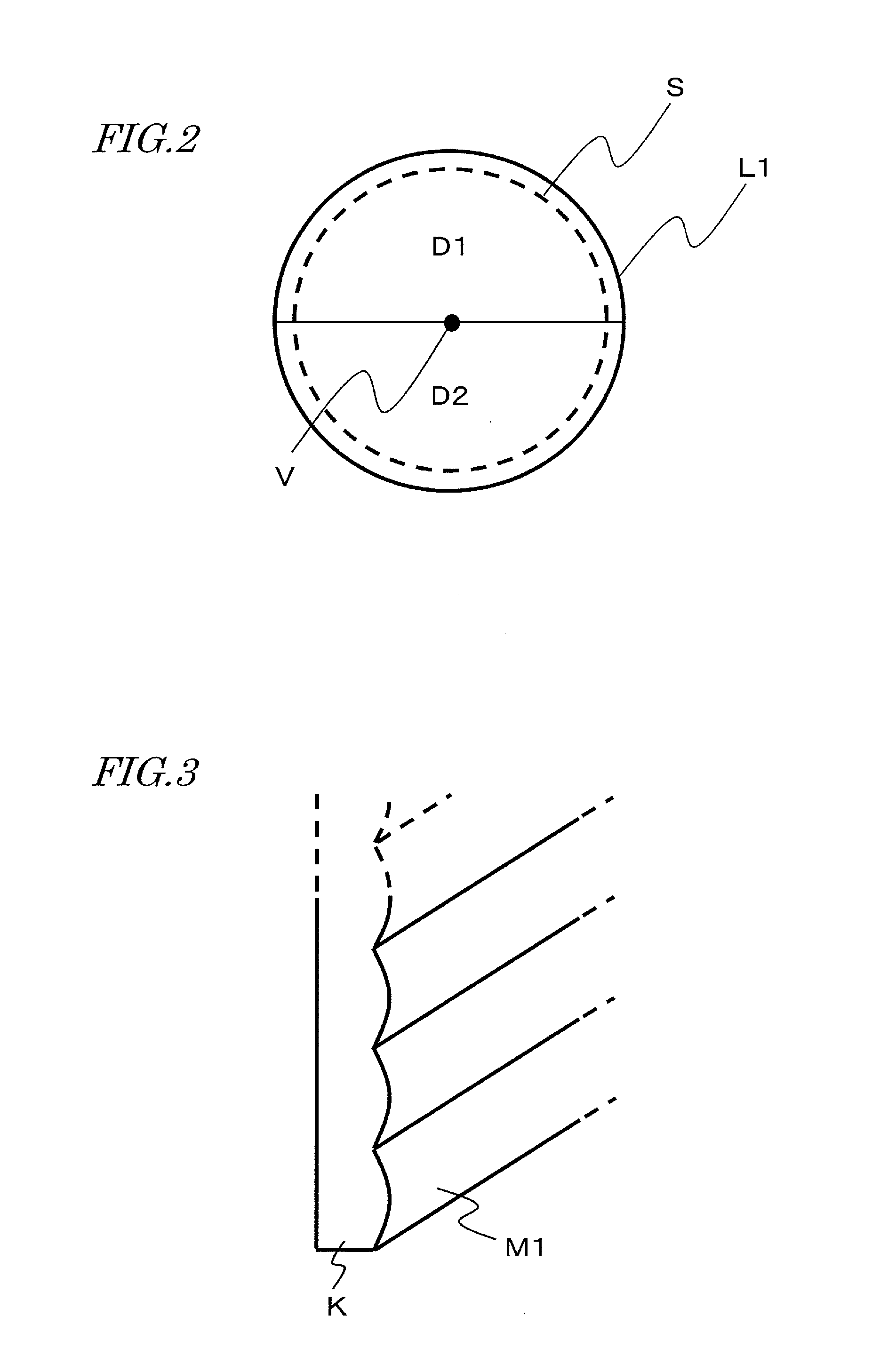Imaging apparatus
a technology of imaging apparatus and slit, which is applied in the field of imaging apparatus, can solve the problems of blurring and inability to distinguish, and achieve the effects of reducing the size of the imaging apparatus, reducing the cost, and improving the accuracy of distance measuremen
- Summary
- Abstract
- Description
- Claims
- Application Information
AI Technical Summary
Benefits of technology
Problems solved by technology
Method used
Image
Examples
embodiment 1
[0112]FIG. 1 is a schematic view showing an imaging apparatus A in Embodiment 1. The imaging apparatus A in Embodiment 1 includes a lens optical system L having an optical axis V, an optical array element K located in the vicinity of the focal point of the lens optical system L, an imaging element N, a first signal processing section C1, a second signal processing section C2, and a storage section Me.
[0113]The lens optical system L includes an optical element L1 on which light beams B1 and B2 from a subject (not shown) are incident, a stop S on which the light which has passed the optical element L1 is incident, and a lens L2 on which the light which has passed the stop S is incident. The optical element L1 includes an optical area D1 and an optical area D2 having an optical characteristic which provides a focusing characteristic different from the focusing characteristic by light rays which have passed the optical area D1. The optical element L1 may be located in the vicinity of th...
embodiment 2
[0181]In Embodiment 2, unlike in Embodiment 1, the optical areas of the optical element L1 have different sizes, and the optical array element includes microlenses instead of a lenticular lens. Herein, the same contents as those of Embodiment 1 will not be described in detail.
[0182]FIG. 11 is a front view of an optical element L1 as seen from the side of a subject. The optical element L1 is divided into the optical areas D1 and D2. The optical area D2 is further divided into optical areas d2A, d2B and d2C. As shown in FIG. 11, the optical areas D1, d2A, d2B and d2C are obtained by dividing a plane vertical to the optical axis V into four, namely, upper, lower, left and right areas along borders having the optical axis V as the center thereof. The optical areas D1 and D2 respectively have optical characteristics which provide different focusing characteristics by light rays which have passed the respective areas.
[0183]FIG. 12 is an isometric view of the optical array element K. At a ...
embodiment 3
[0207]In Embodiment 3, unlike in Embodiments 1 and 2, the lenticular lens or the microlens array are formed on the surface of the imaging plane. Herein, the same contents as those of Embodiment 1 will not be described in detail.
[0208]FIGS. 17A and 17B are enlarged views of the optical array element K and the imaging element N. In this embodiment, a lenticular lens (or a microlens array) Md is formed on the imaging plane Ni of the imaging element N. On the imaging plane Ni, the pixels P are arrayed in rows and columns like in Embodiment 1. One optical component of the lenticular lens or one optical component of the microlens array corresponds to a plurality of pixels P. In this embodiment also, like in Embodiments 1 and 2, the light beams which have passed different areas on the optical element L1 can be respectively guided to different pixels. FIG. 17B shows a modification of this embodiment. In the structure of FIG. 17B, the microlens array Ms is formed on the imaging plane Ni so a...
PUM
 Login to View More
Login to View More Abstract
Description
Claims
Application Information
 Login to View More
Login to View More - R&D
- Intellectual Property
- Life Sciences
- Materials
- Tech Scout
- Unparalleled Data Quality
- Higher Quality Content
- 60% Fewer Hallucinations
Browse by: Latest US Patents, China's latest patents, Technical Efficacy Thesaurus, Application Domain, Technology Topic, Popular Technical Reports.
© 2025 PatSnap. All rights reserved.Legal|Privacy policy|Modern Slavery Act Transparency Statement|Sitemap|About US| Contact US: help@patsnap.com



